Garmin Fenix 7 Vs Garmin Epix 2
The Fenix 7 and Epix 2 are two of Garmin’s top sports watches and choosing between them comes down to a couple of key features
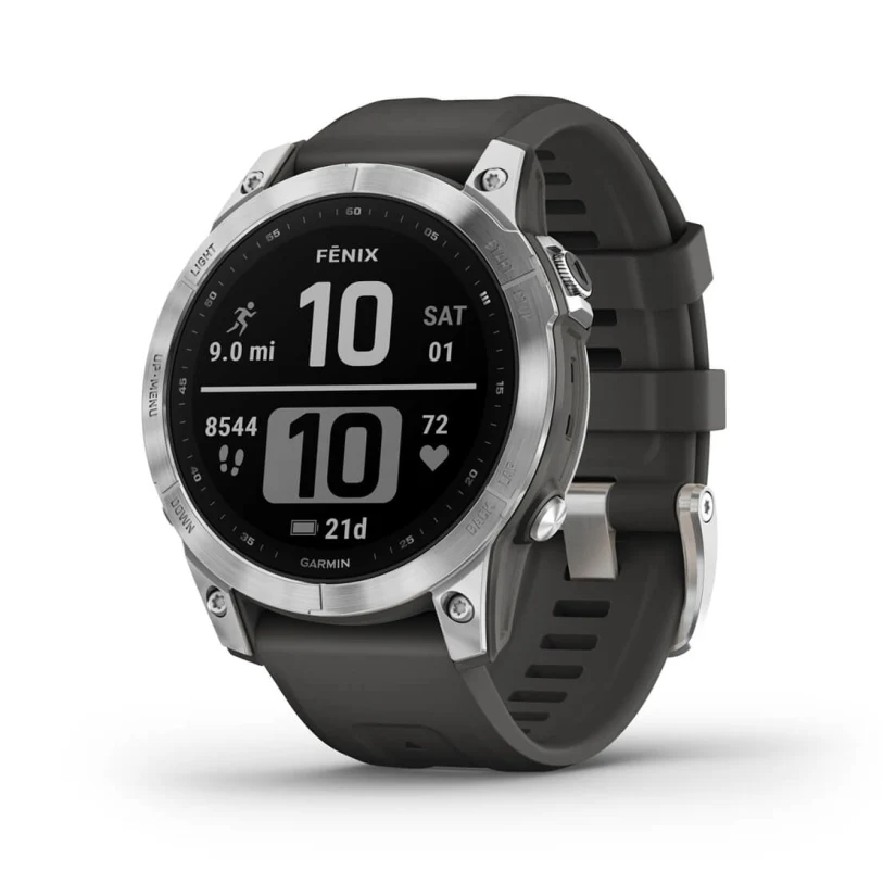
Once the undoubted top dog in Garmin’s sports watch range, the Fenix 7 is now rivaled by the Epix 2 and Enduro 2 but remains a sensational bit of kit, offering long battery life and all of Garmin’s best features.
For
- Outstanding battery life
- Cheaper than Epix 2
- Different sizes available
Against
- Display not as vivid as Epix 2
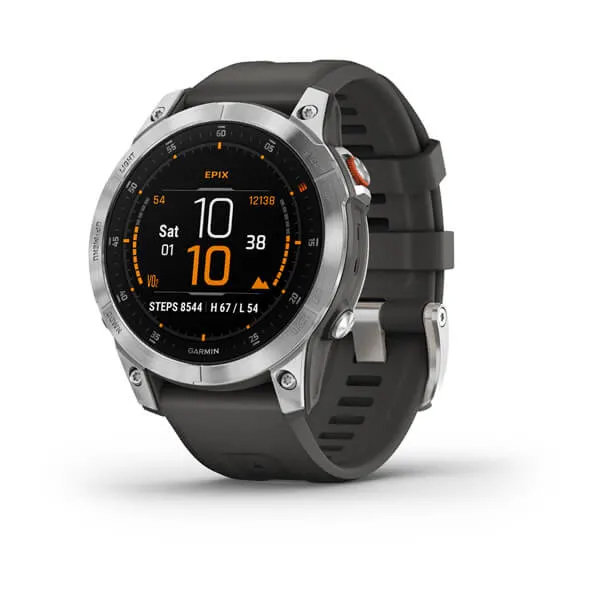
People have been waiting for Garmin to release a watch that’s essentially a Fenix with an AMOLED screen for years, and the Epix 2 does not disappoint. The bright screen is fantastic and elevates the user experience significantly during sports tracking and general life, though the price you pay is a shorter battery life than that of the Fenix 7.
For
- AMOLED display
- Easier to read during activities
- Battery life still OK
Against
- Shorter battery life than Fenix 7
- More expensive than Fenix 7
When the Fenix 7 and Epix 2 launched in early 2022 they sat at the top of Garmin’s range. Since then they have been superseded—by the Garmin Enduro 2 in summer 2022, which is essentially a Fenix 7 Plus, and then by the Garmin Epix Pro and Garmin Fenix 7 Pro ranges, which launched in May 2023.
Despite the arrival of these newer watches, the Epix 2 and Fenix 7 remain among the best sports watches available, and having rigorously tested and reviewed all the watches mentioned above, I’d say they offer better value than the newer Pro models.
Both watches provide most of the best of Garmin’s sports tracking and navigation features, and are getting the latest software features that launched with the Fenix 7 Pro and Epix Pro. The most important difference between the Epix 2 and Fenix 7 is the display. The Fenix uses a memory-in-pixel screen that saves battery, while the Epix 2 has a brighter AMOLED display.
Here’s how the pair stack up in the following key areas: price, design and hardware, battery life, sports tracking, maps and navigation, and smartwatch features.
Garmin Fenix 7 Vs Garmin Epix 2: The Range
With three sizes available and a variety of materials used, the Fenix 7 range is extensive, with 22 models available. The smallest watch is the Fenix 7S, which has a 42mm case and a 1.2in (31mm) screen. The standard Fenix 7 has a 47mm case and a 1.3in (33mm) screen, and the larger Fenix 7X has a 51mm case and a 1.4in (36mm) screen.
The Fenix 7 either has a steel or titanium bezel, the latter of which is lighter and more expensive. Another upgrade, available on both types of bezel, is the addition of solar panels around the screen to extend battery life. There’s an additional solar sapphire model (titanium only) with a sapphire crystal screen instead of the strengthened glass used on non-sapphire models. Sapphire models also get multi-band GPS tracking for increased accuracy, although we didn’t notice a significant difference over the multi-GNSS tracking available on every model.
Compared with the Fenix range, the Epix 2 is relatively simple. The watch comes in one size, which is the same as the standard Fenix 7, and there are only four models available. The base model has a steel case, and you can pay more for watches with sapphire screens and multi-band GPS.
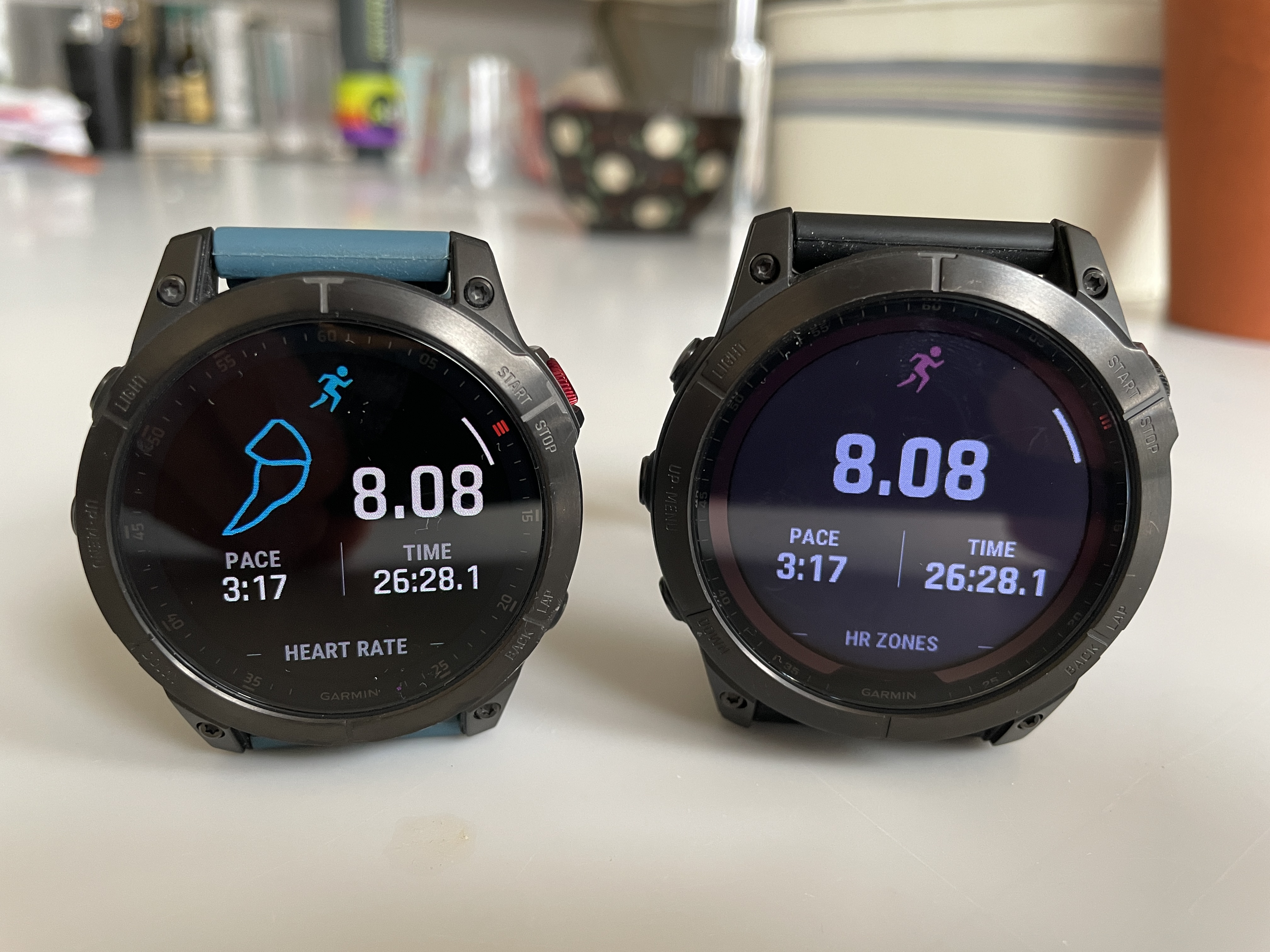
Price
The price of the Fenix 7 varies greatly with the model you opt for, but in general it’s the cheaper option. The base Fenix 7S and 7 watches cost $699.99 in the US and £559.99 in the UK, while the cheapest Fenix 7X is a solar model that costs $899.99/£739.99. The prices go up if you opt for titanium bezels, sapphire screens and solar panels, and the most expensive watch is the Fenix 7X solar sapphire at $999.99/£829.99.
The cheapest Epix 2 model, steel with a strengthened glass screen, will set you back $899.99/£749.99. The rest of the range has sapphire screens and titanium bezels, and costs $999.99/£849.99.
These are the prices at RRP, which, notably, have been lowered in the UK but not in the US since the watches launched. You can expect to pay considerably less than these prices because the Fenix 7 and Epix 2 are older watches, so they are often in sales.
How I Tested These Watches
I wore the Garmin Epix 2 and Garmin Fenix 7X for several weeks ahead of their launch to write the Coach reviews of the watches. I then kept the Epix 2 on as my main sports watch for most of 2022, and have tested all of Garmin’s big launches since to compare—including the Enduro 2, Forerunner 955 and 965, Fenix 7 Pro and Epix Pro. I usually run 50-70 miles a week to test watches, along with doing other training, such as cycling, yoga and strength sessions.
Design And Hardware
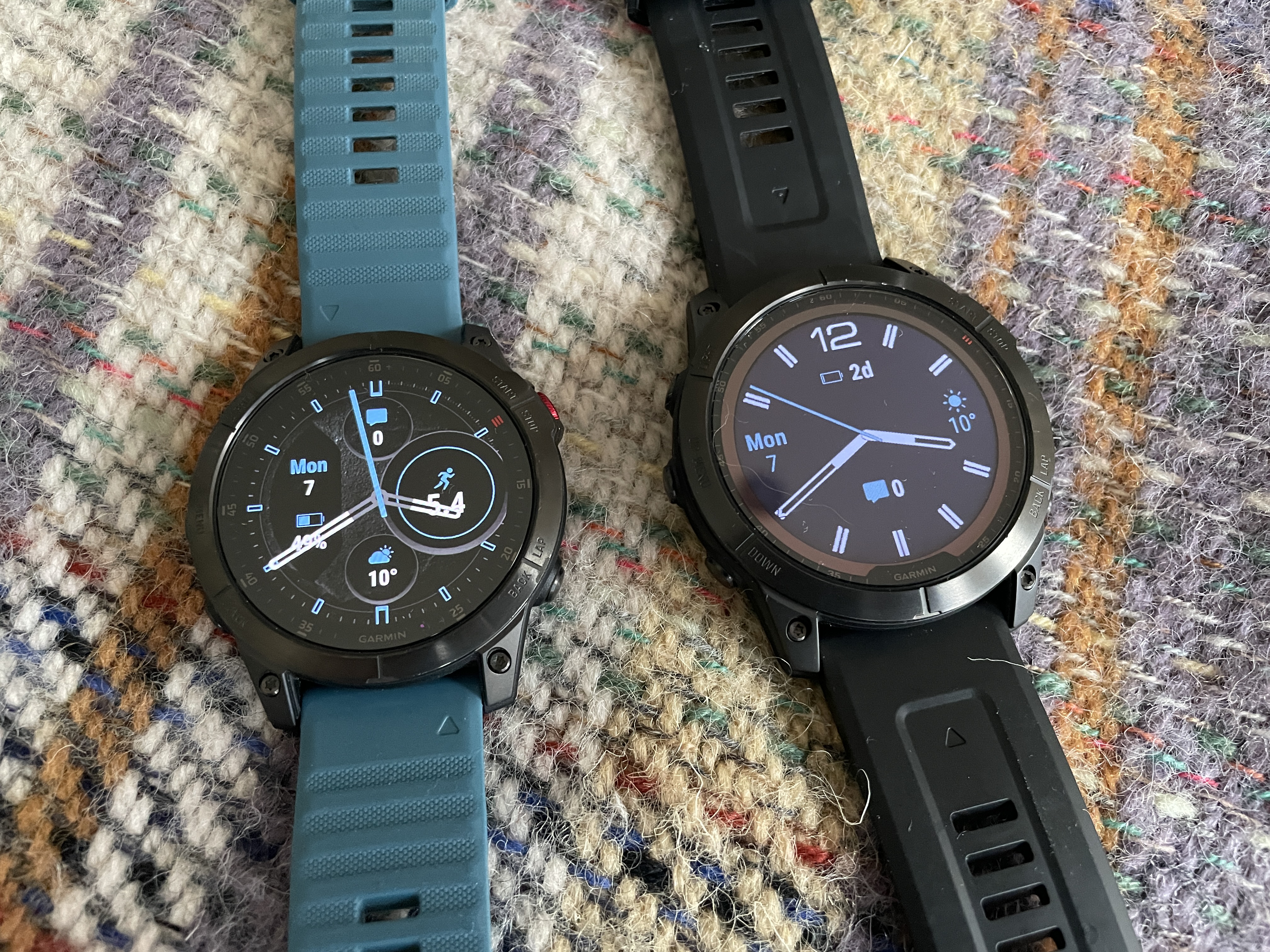
Both the Fenix 7 and Epix 2 watches are built to last, with a waterproof rating of 10 ATM, and rugged bezels and strengthened screens that can withstand regular outdoor use. They also have the same sensors under the hood, with built-in GPS including multi-GNSS tracking (via GPS, GLONASS and Galileo simultaneously), an optical heart rate monitor, an altimeter, barometer and compass, and the ability to pair external sensors via Bluetooth and ANT+.
Both also have touchscreens, but the crucial difference between the watches is that the Epix 2 has an 416x416 AMOLED display that is brighter than the transflective screen (260x260 on the standard size) on the Fenix 7. The latter uses less battery, but the Epix 2’s display was noticeably clearer to read than the Fenix’s in all conditions, and it was a joy to use when navigating using the colour maps.
One other difference is that the larger Fenix 7X has a built-in LED torch,which you don’t get on the Epix 2 or Fenix 7S/7. It’s a handy bonus if not an essential one.
Battery Life
Naturally, you pay for the Epix 2’s glorious AMOLED screen in battery life. In my testing, the Epix 2 lasted around five days of intense use, compared with three weeks for the Fenix 7X I tested. You can easily make the battery go further though, with the Epix 2 lasting over 10 days if you turn off the always-on screen and use less demanding GPS modes. The Fenix 7X will easily last a month between charges if you’re not exercising outdoors every day.
You’ll also see a considerable increase in battery life using a solar Fenix 7 watch in sunny conditions. Solar is not an option in the Epix 2 range. If you play music from the watches during activities the battery life will nosedive, and there are battery saver modes you can use on both watches to reduce how much charge is drawn.
Here’s a full breakdown of the battery you can expect.
Epix 2 Battery Life
You can trust Coach
| Row 0 - Cell 0 | With always-on screen | Without always-on screen |
| Smartwatch mode | 6 days | 16 days |
| GPS-only | 30 hours | 42 hours |
| All satellite systems GPS | 24 hours | 32 hours |
| All satellite systems GPS, plus music | 9 hours | 10 hours |
| All satellite systems, plus multi-band GPS | 15 hours | 20 hours |
Fenix 7 Battery Life
| Row 0 - Cell 0 | Without solar | With solar |
| Smartwatch mode | 18 days | Up to 22 days |
| GPS-only | 57 hours | Up to 73 hours |
| All satellite systems GPS | 40 hours | Up to 48 hours |
| All satellite systems GPS, plus music | Up to 10 hours | Not given |
| All satellite systems, plus multi-band GPS | 23 hours | Up to 26 hours |
Fenix 7S Battery Life
| Row 0 - Cell 0 | Without solar | With solar |
| Smartwatch mode | 11 days | Up to 14 days |
| GPS-only | 37 hours | Up to 46 hours |
| All satellite systems GPS | 26 hours | Up to 30 hours |
| All satellite systems GPS, plus music | Up to 7 hours | Not given |
| All satellite systems, plus multi-band GPS | 15 hours | Up to 16 hours |
Fenix 7X Battery Life
| Row 0 - Cell 0 | Without solar | With solar |
| Smartwatch mode | 28 days | Up to 37 days |
| GPS-only | 89 hours | Up to 122 hours |
| All satellite systems GPS | 63 hours | Up to 77 hours |
| All satellite systems GPS, plus music | Up to 16 hours | Not given |
| All satellite systems, plus multi-band GPS | 36 hours | Up to 41 hours |
Sports Tracking
Both the Fenix 7 and Epix 2 offer superb sports tracking, with a wealth of useful stats available and a vast range of sports modes. This is backed up by the accurate GPS tracking when using all systems on multi-GNSS mode, which is improved very slightly if you opt for a sapphire model and enable the multi-band mode as well.
I found the heart rate tracking of the Epix 2 slightly more accurate than the Fenix 7X when compared with the readings from a chest strap, but both watches were prone to highly inaccurate readings from time to time.
I’d certainly recommend using a chest strap with either watch to get the most accurate data, because this information feeds into the detailed training analysis. This breaks down your training and provides advice to help you keep it balanced between easy and hard sessions, as well as giving race predictions for 5K, 10K, half marathon and marathon events.
The only notable points of difference here are that the Epix 2’s screen is brighter to view during activities, while the Fenix 7 requires less charging in general and will see you through a multi-day ultramarathon without needing more juice.
Maps And Navigation
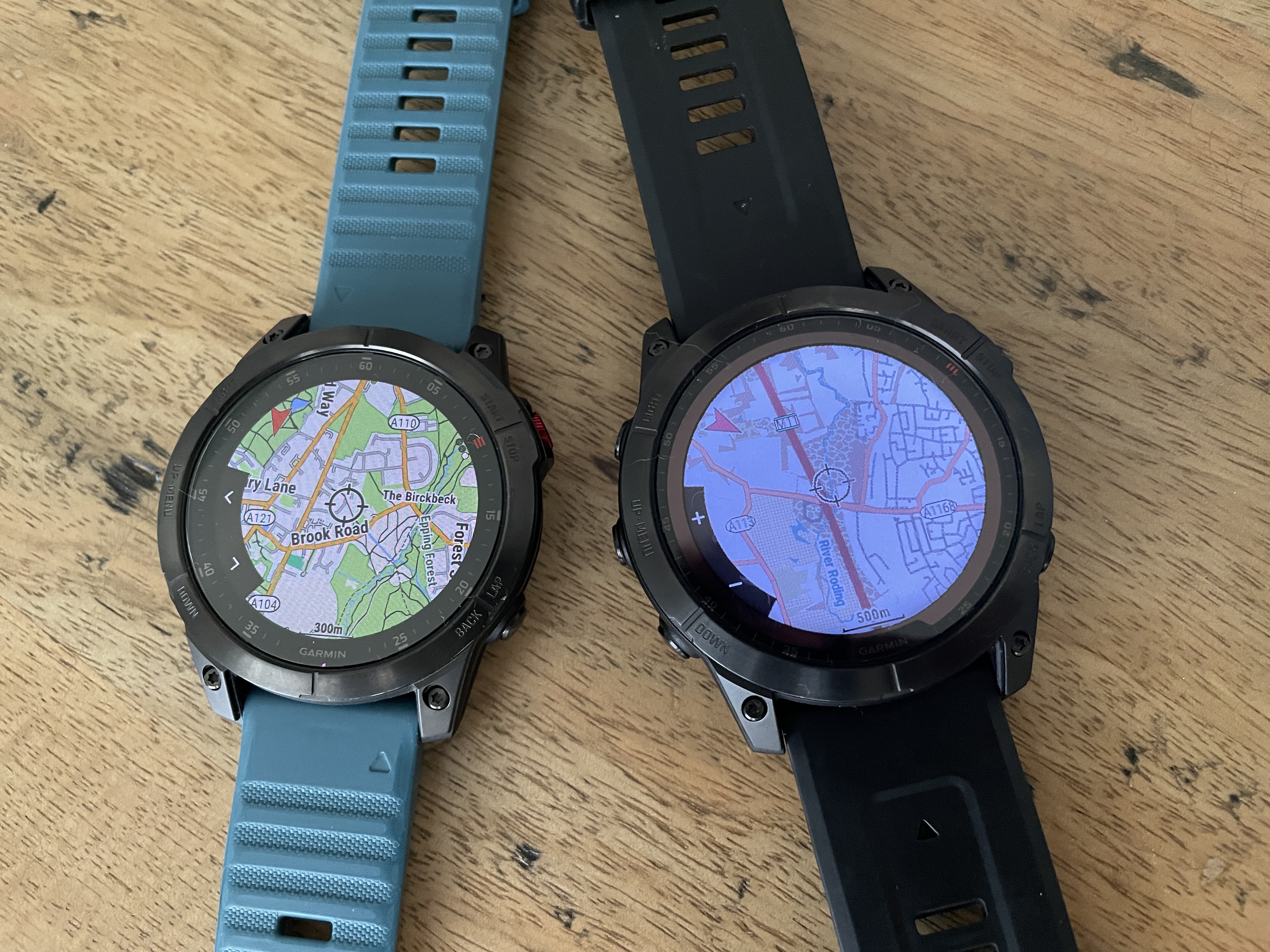
Once again, the watches offer the same features here, and they are market-leading features. You get colour maps (preloaded on sapphire watches, downloadable for free on non-sapphire models) that are clearer to read on the Epix 2, but still enjoyable to use on the Fenix.
You can create routes on the watch, or sync over routes created in the Garmin Connect app or a third-party app like Strava or Komoot, and get turn-by-turn directions plus analysis of your route including details of the climbs and descents you have to tackle via the excellent ClimbPro tool. When out on an activity you can also create a route to direct you back to the start on the fly, so don’t be afraid to get properly lost while wearing the Epix 2 or Fenix 7, safe in the knowledge you watch will guide you home.
Smartwatch Features
Both watches get the best of Garmin’s smart features, including NFC payments through Garmin Pay, smartphone notifications and weather forecasts, plus music storage and the ability to connect to a Spotify Premium and Amazon Music account for offline playback. The Epix 2 also looks the part with its AMOLED screen.
Neither matches the experience of using a true smartwatch like the Apple Watch, mainly because Garmin’s Connect IQ store is sparse compared with the App Store or Google Play, but both the Fenix 7 and Epix 2 have an array of useful smart features.
Get the Coach Newsletter
Sign up for workout ideas, training advice, reviews of the latest gear and more.

Nick Harris-Fry is a journalist who has been covering health and fitness since 2015. Nick is an avid runner, covering 70-110km a week, which gives him ample opportunity to test a wide range of running shoes and running gear. He is also the chief tester for fitness trackers and running watches, treadmills and exercise bikes, and workout headphones.
Coros Vertix 2S Review: The Garmin Fenix Rival Gets Some Useful Upgrades
How To Pick The Best Garmin Watch For You
